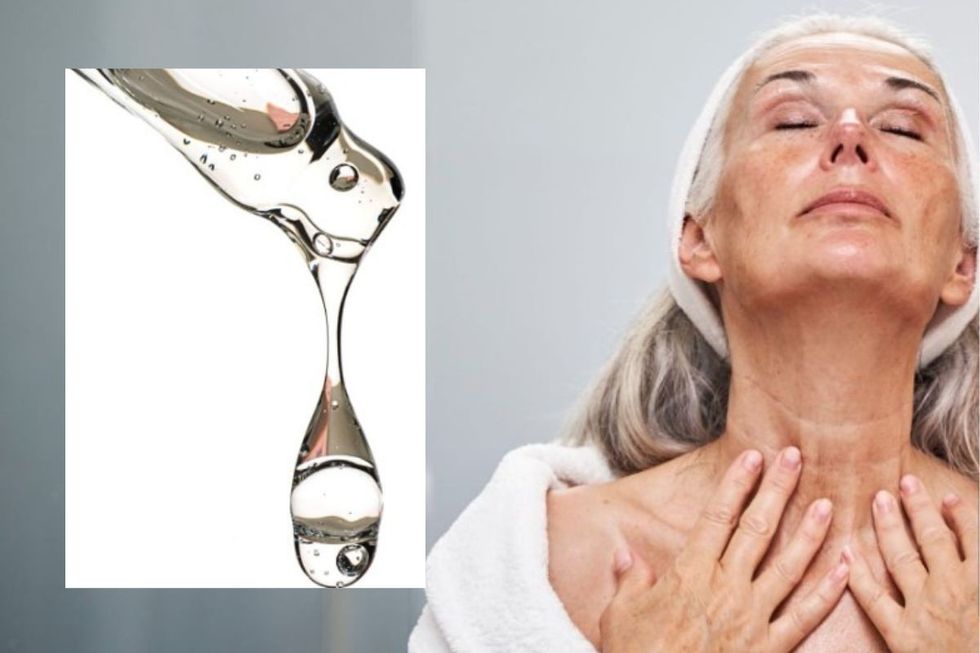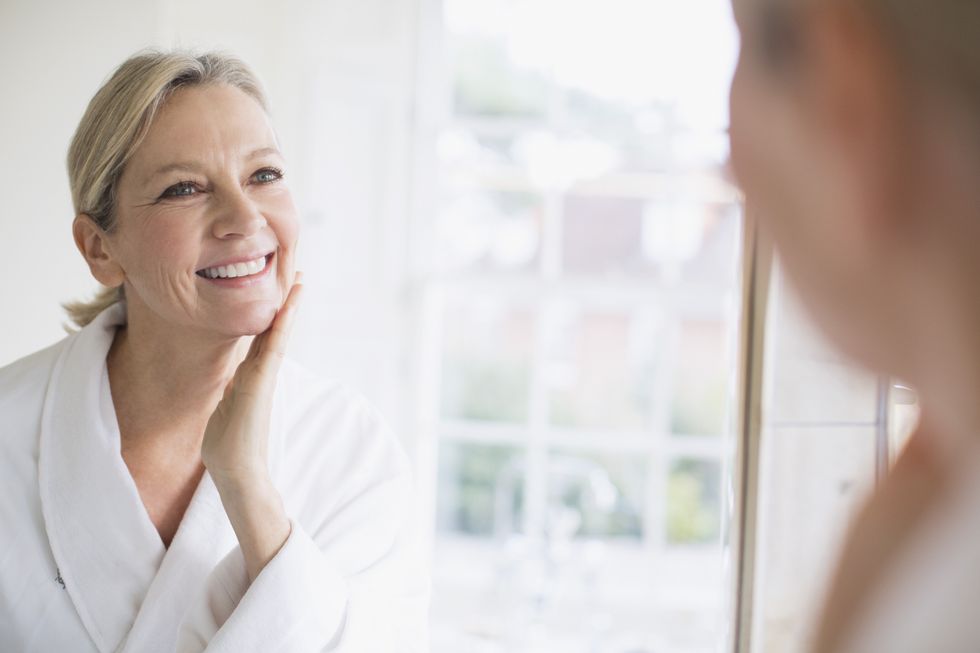Rejuvenating the décolleté: The 'most important ingredients' for tackling signs of ageing on the chest

Protect the neck from signs of ageing with sunscreen and moisturiser
|GETTY

GB News is consulting skin experts to provide their top tips on achieving beauty goals without resorting to surgery. This week, the focus is on the décolleté, upper chest and shoulders
Don't Miss
Most Read
No area of the body is spared from signs of ageing, but some parts reflect cellular changes far earlier than others.
The skin on our chest, or décolleté, undergoes significant changes due to a downfall in the production of collagen and elastin. It doesn't help that this area is often neglected in skin care regimens ether.
Naturally, certain elements in our day-to-day environment will exacerbate these issues, meaning we have some control over the speed of their progression.
What causes signs of ageing on the décolleté?
Gessica Hulse, BSc.N. R.N, from BCI Clinic, explained that as we age, the skin on the chest, or décolleté becomes thinner, drier and loses elasticity due to lower collagen and elastin levels.

There are myriad ways to tackle signs of ageing on the chest
|GETTY
“Sun exposure speeds up these changes, causing wrinkles, sagging and dark spots,” according to the expert.
“There are lots of treatment options for signs of ageing in the chest. Treatments like microneedling work by boosting collagen products, which helps smooth and firm the skin.”
Microneedling
Microneeding is a cosmetic procedure that encourages collagen production using tiny sterilised needles.
It’s important to note that while the procedure is effective for reversing signs of ageing in the chest, the results are not immediate.
According to the Chelsea and Westminster Hospital NHS Foundation Trust, it can take up to three months more before you notice an improvement.
Retinols
Retinols, vitamin A derivatives, can do wonders for the texture of skin on the chest if used correctly.
According to board-certified dermatologist Dr Shereene Idriss, they are “the most important ingredients” when it comes to promoting collagen production.
The expert says to expect some irritation, dryness and sun sensitivity when first introducing the ingredient to your routine.
“It can cause a lot of redness and it can cause a lot of itching and can be really poorly tolerated,” she noted.
Because the neck is so sensitive, Dr Idriss recommends starting with a lower percentage of retinol that the chest is more likely to tolerate.
Chemical peels
Chemical peels offer another effective solution. These treatments remove the outer layer of damaged skin, revealing fresher, more youthful-looking skin beneath.
Chemical peels are the next more effective quick fix for tackling signs of ageing in the chest, according to Hulse.
“[They] are great for fading dark spots and giving the skin a fresh, resurfaced look,” she explained.
Experts at Cleveland Clinic explained that the solution targets a broader range of skin care concerns beyond ageing of the chest.
LATEST DEVELOPMENTS

The chest are is often neglected in skin care routines
| GETTY“Chemical peels can reduce or improve fine lines and wrinkles, acne, scars, uneven colouring and other skin imperfections,” the health body explained.
“Different chemicals determine the depth of your peel and type of skin condition treated.”
PRP Therapy
PRP therapy is a three-step procedure that has quickly become a top contender among anti-ageing treatments.
According to the American Academy of Dermatology Association, the process involves drawing blood from the arm and placing it in a machine that draws platelets from it.
The part of the blood containing the highest concentration of platelets is then re-injected into the body.
The treatment takes growth factors from blood to speed up healing and encourage collagen production, leaving the skin looking revitalised.
Most importantly, the most essential factor for maintaining youthful-looking skin in often-neglected neck and chest areas is a comprehensive skin care routine.
Coupling a nightly regimen with diligent daily SPF application is the cornerstone of anti-ageing skin care.










